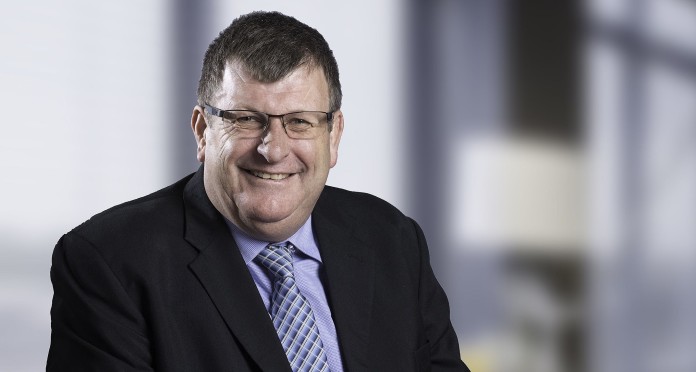
HARMONY Gold adjusted full-year production guidance down to 1.4 million ounces following a disappointing first half performance, principally at its Kusasalethu mine, but the impact of the problems were softened by a 19% lift in the gold price received.
The outcome was a massive 253 cents positive turnaround in interim share earnings of some 249c from a loss in the previous six month period. Headline earnings were R1.33bn for the six months compared to a R21m loss in six months ended December 2018.
Interim gold production came in 8% lower year-on-year at 688,379 oz (2018: 751,008 oz) as Kusasalethu ran into unexpected geological problems. Hidden Valley, Harmony’s gold mine in Papua New Guinea (PNG), also experienced lower grades – as guided – as it moved into a new stage of mining.
Peter Steenkamp, CEO of Harmony Gold, said readjustments to the planning schedule at Kusasalethu had been made and he therefore expected a smoother ride at the operation for the remainder of the financial year. However, the joker in the pack was the South African electricity utility company, Eskom, where power rationing has intensified.
Eskom briefly increased rationing to stage eight last year – in which about 8,000MW in capacity was cut from the national grid – resulting in mining firms deciding not to send crews underground. “The loadshedding came just before Christmas when we are building up momentum before the break and that was very disruptive,” said Steenkamp.
Loadshedding is now being kept at a stage two constant – about 2,000MW is rationed across the grid – which is preventing Harmony from conducted catch-up hoisting over the weekends. Steenkamp said the company was in discussions with Eskom about easing the pressure on the company’s power usage. An application was also lodged with the National Energy Regulator of South Africa for Harmony to build 30MW in independent power.
Amid these operational challenges, Steenkamp acknowledged the current forgiving nature of the market. “We expect good margins coming through,” he said.
Harmony reported an operating free cash flow of R1.92bn for the six months ended December, an increase of 63% year-on-year, and remains highly leveraged. Assuming an exchange rate of R14.70 to the dollar, and a base gold price of $1,480/oz, Harmony receives a 29% bump in cash flow if the gold price increases 5%.
The improvement in cash enabled Harmony to cut debt R632m to net R4.29bn. The dividend was also passed. “We’ve been through a growth phase funded by debt,” said Frank Abbott, Harmony’s outgoing financial director, when asked if the company was keeping its powder dry for an acquisition.
Abbott confirmed the company intended to continue with its gold price and currency hedging strategy. “It is better to hedge when the price is higher rather than lower,” he said. “We have done well with it over the last four years and we’ll continue.”
Steenkamp was less forthcoming when asked during the media call to confirm speculation by Bloomberg News that Harmony had been successful in bidding for Mponeng and Mine Waste Solutions (MWS), assets that AngloGold Ashanti put up for sale last year.
“We continue to look at growth options in PNG, South Africa and the rest of Africa,” he said. Asked how the purchase of Mponeng would be funded, he said: “If we have an acquisition, we will have a funding plan”. Completing a due diligence and getting board approval for the deal would also be prerequisites, he added.
The market, however, seems convinced Harmony’s purchase of Mponeng and MWS will happen after Sibanye-Stillwater all but distanced itself from further major new investments in South Africa whilst another company interested in picking up remaining gold assets – China’s Heaven Sent Gold Group – has run into liquidity problems.
WAFI-GOLPU
Harmony reported some much-needed progress in negotiations with the PNG government after it tore up the memorandum of understanding (MoU) that had been signed between joint venture partners Harmony and Newcrest Mining and the previous administration for the development of the Wafi-Golpu project.
If developed into a mine, Wafi-Golpu would deliver average annual gold production of about 266,000 oz, but politics and red-tape has delayed the project.
“We have a review of the MoU with the president (James Marape) and the governor of Morobe (province, in the PNG) and both parties decided to withdraw from the MoU as it was not valid,” said Steenkamp. “But at least now we have started a new process with the government which is a big step,” he added.
Despite the setbacks, Wafi-Golpu was “a valuable asset” and the company was “still very keen on developing it,” said Steenkamp.








